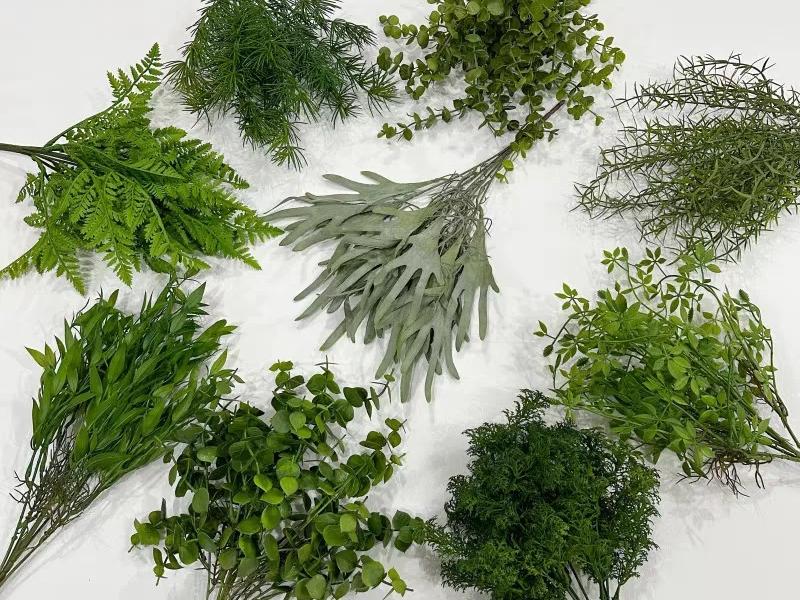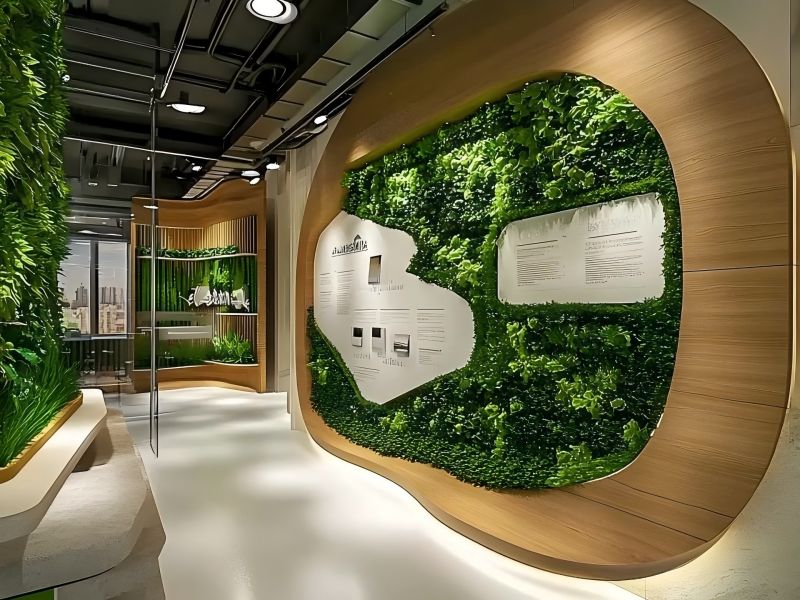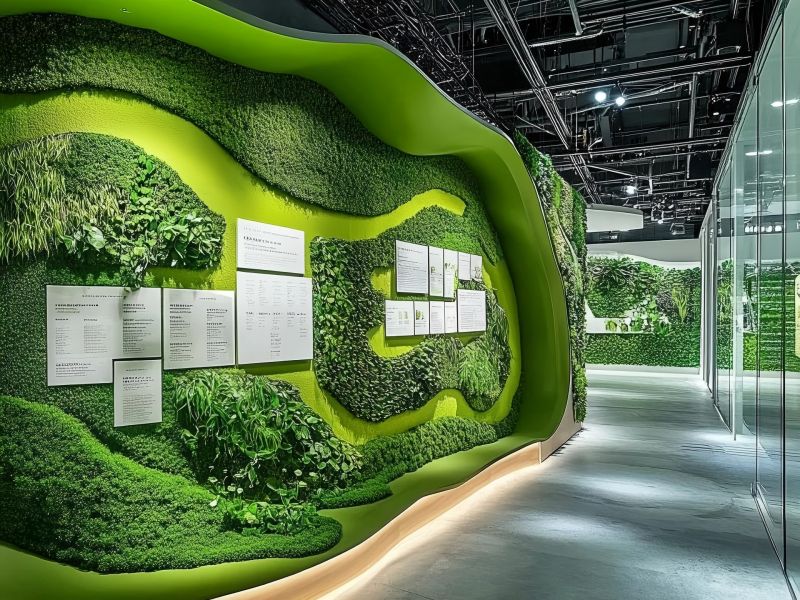News Center
Shandong Zhensure New Materials Technology Industry Co., Ltd.
1. Definition and Technical Core
Artificial plant walls, also known as artificial green plant walls, are an innovative vertical greening solution.
It adopts high-performance and environmentally friendly materials, such as PE (polyethylene), PVC (polyvinyl chloride) or silk fabric.
Through high-precision mold pressing and manual coloring techniques, the leaf texture, branch curvature and natural gradient color of real plants are restored.
Its technical core lies in:
Simulation process: The surface of the leaves undergoes special treatment to simulate the touch and luster of real plants,
even achieving an effect that is indistinguishable from the real thing.
Structural system: It is fixed with lightweight steel frames or aluminum alloy skeletons, and is equipped with a snap-on modular design,
supporting quick disassembly and assembly as well as repeated use.
Safety standards: The product has passed the B1-level fire resistance test,
and its flame retardant performance meets the fire protection requirements for public places, ensuring safe use.
Artificial plant walls not only restore the beauty of nature, but also solve many pain points of real plant walls through technological means,
such as high maintenance costs and poor environmental adaptability.

2. Analysis of Core Advantages
The core advantage of the artificial plant wall lies in its "zero maintenance" feature and "all-scenario adaptation" capability:
Zero maintenance, optimal full life cycle cost: No need for watering, fertilizing or pruning, labor cost approaches zero.
The surface is covered with a dust-proof coating, and the dust can be gently brushed off with a feather duster.
It does not fade when used outdoors for 5 to 8 years, and its lifespan in indoor environments can reach over 10 years.
It can be used without supplementary lighting equipment in dark environments (such as basements and dark bathrooms).
Customizable arc-shaped, hollowed-out, sloping and other irregular wall surfaces are available to meet complex design requirements.
Safe and environmentally friendly, with no biological risks:
Completely eliminate the breeding of mosquitoes and avoid allergic reactions caused by pollen and plant SAP. 90% of the components can be recycled,
meeting the standards of green buildings.
In addition, the artificial plant wall also has the potential for visual and functional upgrades.
For instance, it can be combined with a lighting system to create a night-time luminous effect,
or it can absorb high-frequency noise through a porous structure to enhance the quietness of the space.

3. Application Scenarios and Future Trends
The application scenarios of artificial plant walls are extensive, ranging from commercial Spaces to home decoration and even special environments.
Commercial Spaces: In places such as shopping center decoration, brand pop-up stores, and hotel lobbies,
artificial plant walls are utilized to increase the duration of customer stay and enhance brand visual memory.
Home decoration: Areas such as the TV background wall, children's room, and balcony partition create a "zero-burden" natural style,
bringing vitality to the home space. Special scenarios: Oceanariums, zoo theme areas, soilless cultivation areas, museum bionic scenes,
etc. Immersive experiences are created through simulated plant walls.
Looking to the future, artificial plant walls will be deeply integrated with technology, presenting more innovative trends:
Interactive Plant wall: Integrated with sensors, it realizes intelligent functions such as touch-enabled flowering and voice interaction, enhancing user interactivity.
Metaverse integration: Through AR technology, virtual plants are superimposed on physical walls to create surreal spatial experiences.
Carbon neutrality contribution: It replaces the carbon emissions generated during the transportation and maintenance of real plants,
contributing to the construction of a low-carbon society.
The artificial plant wall, with the concept of "technology reconstructing nature",
transforms vertical greening from "bioengineering" into "spatial art", ushering in a new era of spatial decoration.

It overcomes the shortcomings of traditional plant walls, such as cumbersome maintenance and limited environmental conditions. With advantages like zero maintenance, high weather resistance, and full-scenario adaptability, it has become an ideal decoration solution for commercial Spaces, home designs, and special environments, redefining the way humans interact with nature.